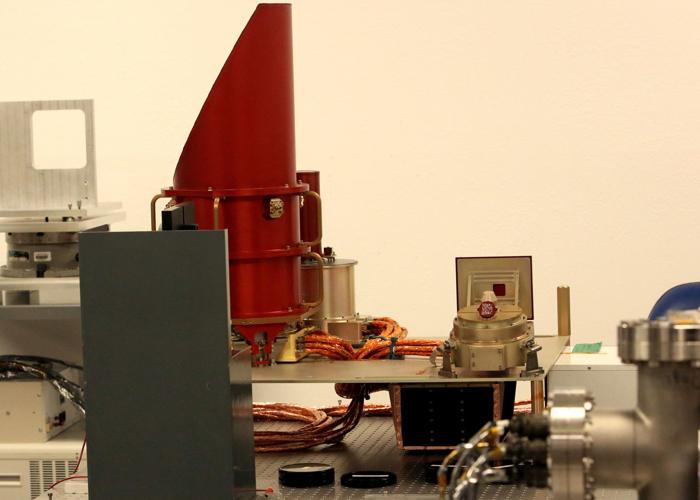UA scientists leading a seven-year NASA mission to return a sample of an asteroid to Earth celebrated a “happy week” for the OSIRIS-REx spacecraft by releasing the first images taken by its camera.
At a news briefing Monday, mission leaders reported successful tests of all the robotic spacecraft’s instruments and declared themselves proud parents of a healthy child.
If “launch is like a birth,” said instrument scientist Bashar Rizk, “the things we sent out there are taking their first steps, their first breaths.”
Rizk, who headed the team that built and operates the three-camera OCAMS instrument, compared its initial images of the star field in front of it to a child’s first drawings — maybe not great art, but proof of potential and worthy of a place of honor on the refrigerator.
The week-long series of instrument check-ups was conducted at Lockheed Martin in Littleton, Colo., and relayed to the Science Planning and Operations Center, operated in Tucson by the University of Arizona Lunar and Planetary Laboratory.
Sara Knutson, a senior operations engineer at the Tucson center who was at Lockheed Martin for the tests, said she was able to share in the elation once all the tests were completed.
“It was very exciting. The feeling going into the instrument checkups was, you know, nervousness, a little bit of anxiety, a little bit of that feeling of, ‘Well it’s (millions of miles) away and there’s nothing I can do about it if it doesn’t turn on, so this is it.’”
Knutson said the tests began a week ago Monday with the Tucson-built camera suite and the first of 150 images received at 11 a.m. local time.
Subsequent tests of the craft’s laser altimeter, two spectrographs, an X-ray imager and navigation cameras were completed by Thursday. “Overall, the initial checkout was a success,” Knutson said.
Rizk said the ability of the three cameras to record light was actually a bit better than expected.
OSIRIS-REx has been performing beyond expectations from the beginning, said Dante Lauretta, the mission’s principal investigator.
“We launched within 180 milliseconds of the opening of our launch window (Sept. 8),” he said. “That really set the tone.”
Subsequent milestones were reached on time or earlier, he said.
“Overall the space craft is perfectly healthy with no issues or anomalies during the first couple weeks of operations,” said Lauretta.
OSIRIS-REx is 5.3 million miles along its two-year, 2 billion-mile journey to the carbonaceous asteroid Bennu, where it will spend a year mapping and probing the asteroid’s surface with its instrument array. Then it will scoop up a sample to return to Earth in 2023.








